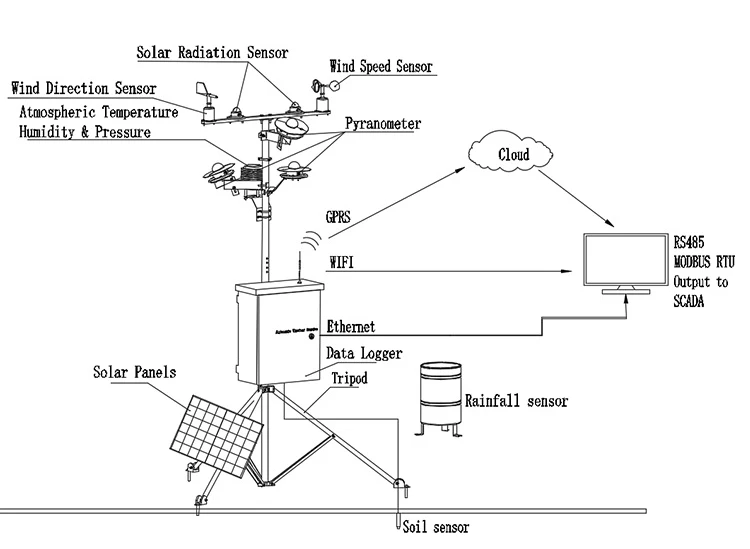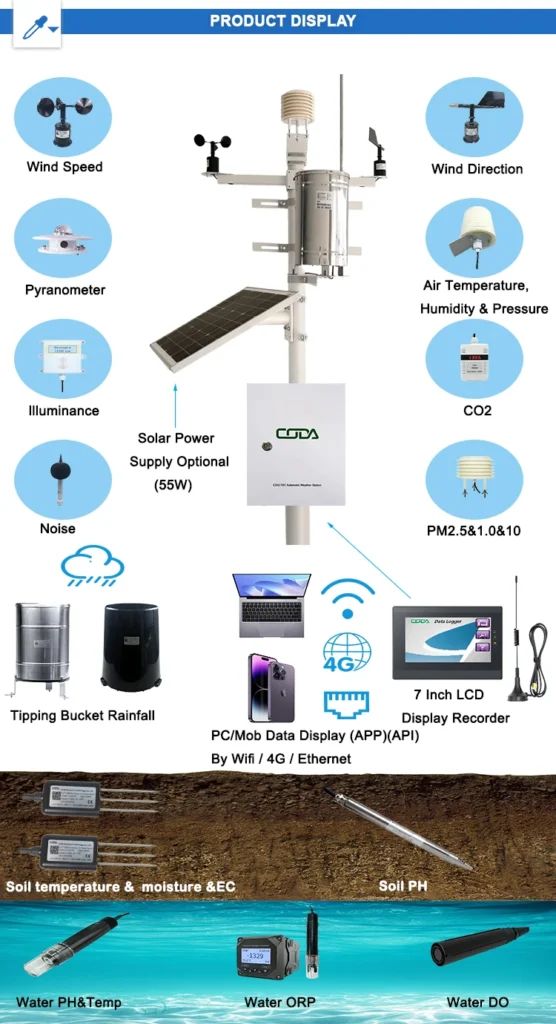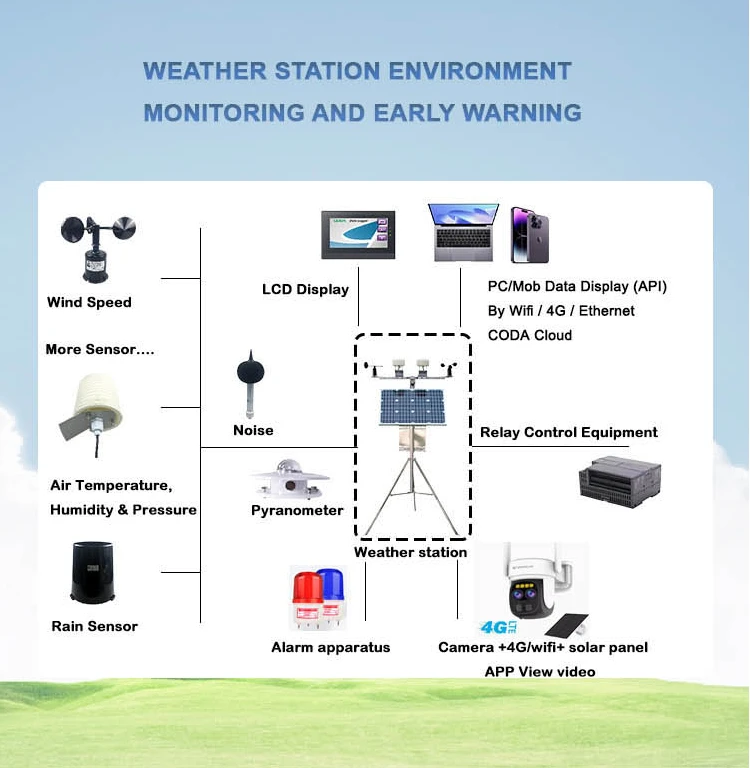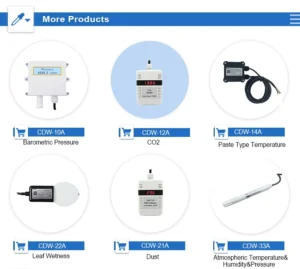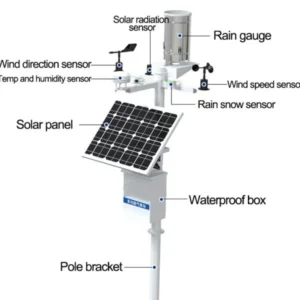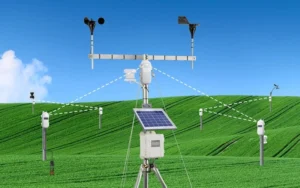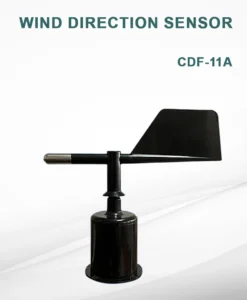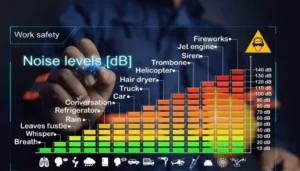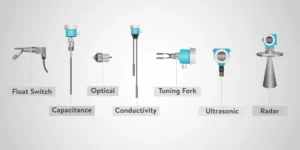Weather Station Installation: Essential Tips for a Smooth Setup
Weather stations are popular with hobbyists, schools, and businesses. They want to track and study weather patterns. Setting up a weather station can give you accurate and real-time weather data. This is helpful for both hobbyists and professional weather experts.
A bad setup can affect how reliable your measurements are. This guide shows the main steps for a successful installation and operation of a weather station.
Importance of Installing a Weather Station
Before we look at the installation process, it’s good to know why weather stations are important. They provide many benefits, such as:
1. **Daily Weather Monitoring**
Weather stations help people track important things like temperature, humidity, wind speed, and rain. This information is useful for planning activities such as farming, outdoor events, or construction work.
2. **Localized and Accurate Forecasting**
By collecting data for your area, you can make better forecasts for local weather events, like storms or snow.
3. **Contributions to Climate Research**
Data collected from weather stations over a long time can help climate studies. This data gives important insights into local weather trends and global climate change.
Optimizing Placement
Correct placement is key for getting accurate readings. Keep these guidelines in mind when selecting the site:
1. **Unobstructed Area**
Pick a spot that has plenty of open space. Make sure it is away from tall buildings or trees. These factors might change how we measure wind speed and sunlight.
2. **Non-Reflective Surfaces**
Do not put the station close to heat-reflective materials such as concrete or asphalt. These materials can change temperature readings.
3. **Level Terrain**
Put the equipment on flat ground. This will ensure the rain gauge works well and collects accurate data.
4. **Easy Accessibility**
Pick a place that is easy to reach for regular maintenance and data retrieval.
Steps to Install Your Weather Station
Once you find the best spot, start the installation process. Follow these steps closely to get the best results:
1. **Mounting the Equipment**
Use mounting brackets or a strong pole to secure all parts. Make sure the setup is high enough for accurate wind measurements. It should also stay still while in use.
2. **Assembling the Instruments**
– Attach important sensors.
– Use an anemometer to check how fast the wind is blowing.
– Wind vane to determine which way the wind is blowing.
– Use a rain gauge to measure precipitation. Carefully read the manufacturer’s instructions for correct assembly.
3. **Power Supply Setup**
Check if your station uses batteries. Also, check if it needs to be plugged in. Make sure you have a reliable power source to keep everything working well at all times.
Setting Up Your Weather Station
Once you install it, follow these important steps to improve performance:
1. **Calibrating Sensors**
Adjust each tool based on the manufacturer’s instructions. This will help you get accurate results.
2. **Setting Time and Date**
Change the date and time on your device. This helps with logging and analyzing weather data correctly.
3. **Enabling Wireless Connectivity**
If your weather station has wireless features, connect it to your favorite devices. You can use computers or smartphones to watch and learn about things from a distance.
Ensuring Accurate Data Through Calibration
Calibration helps your sensors provide steady and reliable measurements. Here’s how to fine-tune essential components:
1. **Temperature Sensor**
Check your temperature sensor with a trusted indoor thermometer. Change its settings to show correct readings.
2. **Humidity Sensor**
Use a calibrated hygrometer to check the humidity data. Then, adjust your station as needed.
3. **Wind Speed and Direction Instruments**
Check the manual for your weather station for help. It will guide you on calibrating wind sensors for accurate results.
Understanding Weather Data
Now that your weather station is set up and working, it’s time to start looking at the data you collected. Here’s a quick guide to help you interpret the key metrics:
1. **Temperature**:
This metric shows the current air temperature. Typically, it is gauged in Celsius (°C) or Fahrenheit (°F).
2. **Humidity**:
Humidity is shown as a percentage. It shows how much moisture is in the air. It helps decide comfort levels and affects weather patterns.
3.**Wind Speed**:
This shows how strong the wind is. It is commonly quantified in miles per hour (mph), kilometers per hour (km/h), or in nautical knots.
4. **Wind Direction**:
This value is found with a wind vane. It is shown in degrees or directions, like north, south, east, and west. This tells us where the wind comes from.
5. **Precipitation**:
Rainfall is measured using a rain gauge. It shows how much it rains over a certain time. The amount is recorded in millimeters (mm) or inches.
Regular Maintenance and Fixing Problems
To keep your weather station running well, regular maintenance is key. This helps ensure it gives accurate results. Here are some tips and troubleshooting ideas:
1. **Cleaning**:
Clean the weather station parts often. This will help get rid of dirt, debris, or spider webs that can block measurements.
2. **Battery Replacement**:
For battery-operated stations, check the battery status often. Replace the batteries when they are low. This will help your device run well.
3. **Firmware Updates**:
Visit the manufacturer’s website often for firmware updates. This will help you keep up to date. Updates usually make things work better and fix technical problems.
4. **Troubleshooting**:
If data accuracy is not consistent or problems occur, check the manufacturer’s troubleshooting guide. You can reach out to their support team for help.
Conclusion
Setting up a weather station can be a fun experience. It gives you useful information about local weather trends and conditions. By following these steps, you will install and calibrate correctly.
This will also make the data more accurate and trustworthy. Choose a good location. Know the recorded metrics. Do regular maintenance to make your station last longer.
Modern environmental monitoring systems have advanced a lot in recent years. They continue to impress users with what they can do. For more tips or information on sensor solutions, visit our website at **Coda Sensors**. You can reach out to us with any questions or if you are interested in our products.
**Hunan Coda Electronic Tech Co., Ltd** is sure it can meet customer needs and stay profitable.
